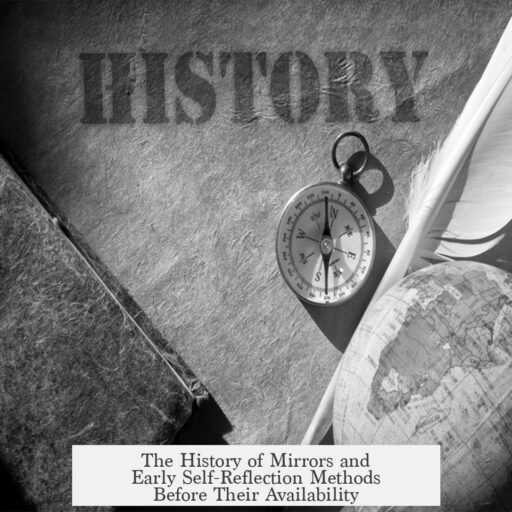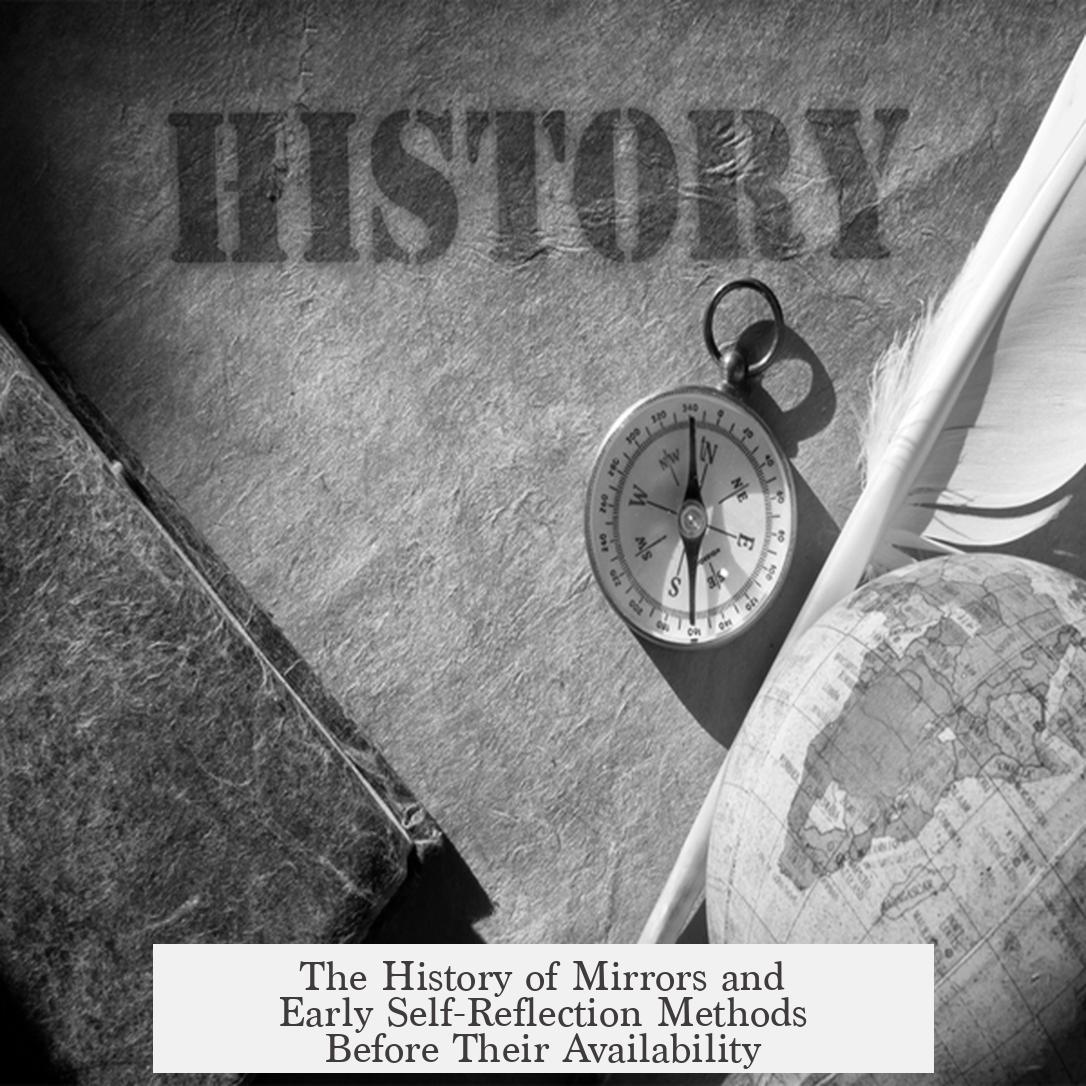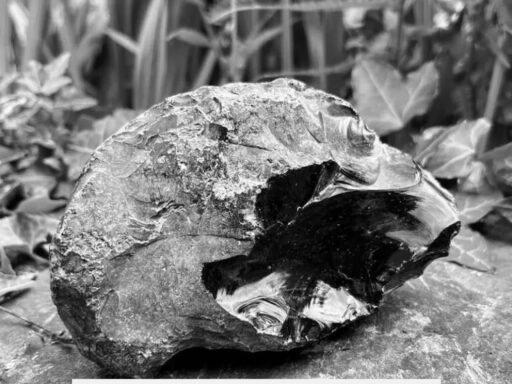Mirrors became readily available during the Industrial Revolution, when advancements in manufacturing enabled mass production of silvered-glass mirrors. Before this period, mirrors existed but were costly and rare, limited to elites who could afford polished metals or early glass mirrors.
Ancient people saw their reflections in natural surfaces like water or polished stones. Reflection in still water offered a simple way to view oneself, though images were often unclear and dependent on lighting. Around 8,000 years ago, humans used polished obsidian, a naturally occurring volcanic glass, as early mirrors. These were among the first man-made reflective tools.
By approximately 2000 BCE, metallurgy had advanced enough for people to polish bronze and other metals to create mirrors. These metal mirrors provided sharper reflections but remained costly and limited to wealthy classes.
The first glass mirrors emerged in the first century A.D. by coating glass with a thin layer of gold leaf or molten lead, which improved reflectivity. However, these were difficult to produce and not widely accessible.
The modern mirror’s turning point occurred in 1835 when Justus von Liebig developed the silvered-glass mirror. This technique involved depositing a reflective silver layer on glass, greatly enhancing the quality and durability of mirrors.
Mass production methods during the Industrial Revolution made silvered-glass mirrors affordable for broad populations. Factories could produce large quantities quickly and cheaply, leading mirrors to become common household items by the 19th century.
Before widespread mirror use, cultures viewed reflection as mysterious or mystical. Reflective surfaces played roles in rituals like scrying—using water, crystals, or mirrors to glimpse other worlds or futures. Literary works such as Lewis Carroll’s Through the Looking Glass illustrate the cultural fascination with mirrored worlds and reflection.
- Early reflections came from water and polished obsidian around 8,000 years ago.
- Polished bronze mirrors appeared circa 2000 BCE but were expensive.
- Glass mirrors coated with gold leaf arose in the first century A.D.
- Modern silvered-glass mirrors were invented in 1835 by Justus von Liebig.
- Mass production in the Industrial Revolution made mirrors affordable and common.
- Reflective surfaces influenced cultural beliefs and rituals before mirrors were widespread.
When Did Mirrors Become Readily Available? How Did People See Themselves Before Mirrors?
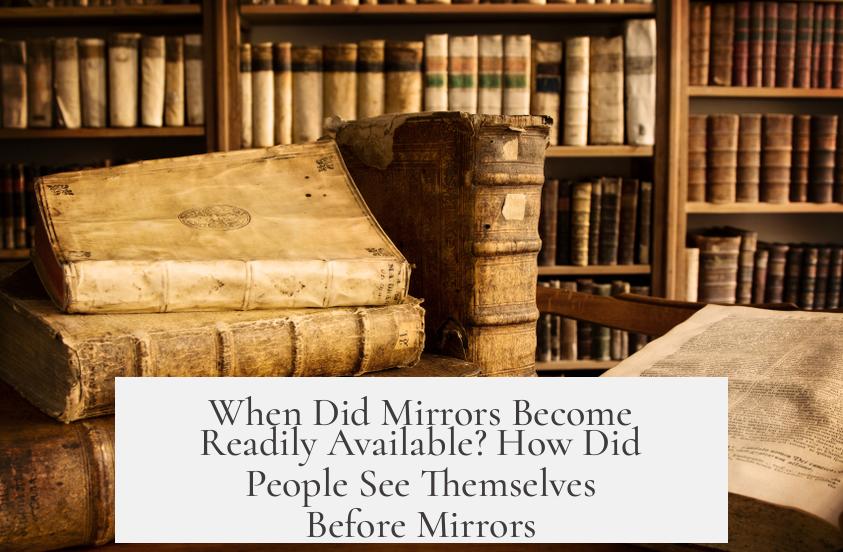
Mirrors, as we know them today, became widely accessible only during the Industrial Revolution, when silvered-glass mirrors could be mass-produced affordably and quickly. But long before that, humans had ingenious ways of catching their own reflections. Let’s travel back in time to explore how people saw themselves before the modern mirror’s debut and trace the fascinating journey of reflective surfaces through history.
Before the age of silver-coated glass, shimmering reflections were a rarity, and self-sight meant using what nature or clever craftsmanship offered. Ever paused to wonder how our ancestors checked their hair or fixed their crowns without a mirror? The answer lies in trickster surfaces like water and volcanic glass.
Early Ways to See Yourself: Water and Obsidian
Since time immemorial, humans have noticed the magic in still water. Catch a calm pond at just the right angle, and you get a rudimentary reflection. It’s not crystal clear, but it’s enough to glimpse your face. Imagine the surprise of early humans when the flickering image of themselves appeared on a tranquil lake or stream. Was it fear? Fascination? Probably both. Water reflections were easily accessible but fickle—ripples, shadows, or cloudy water could ruin the view.
But water wasn’t the only natural reflector. Around 8000 years ago, people discovered that obsidian, a type of volcanic glass, could be polished into a mirror-like surface. Imagine holding a sleek, black piece of glass that, when smoothed and caught in the light, reveals your face with eerie clarity. Early mirrors made from obsidian date back at least to 6000 BCE. These were prized possessions, rare glimpses into one’s appearance through the shimmering edge of nature itself.
Metal Mirrors and the Elite: Bronze Around 2000 BCE
As metalworking advanced, polished metals unlocked sharper reflections. By 2000 BCE, bronze mirrors appeared. These weren’t your everyday handheld gadgets, but costly objects mostly reserved for the wealthy or powerful. Polished bronze gleamed with a muted shine, reflecting faces with a softer, less perfect quality than glass. Nonetheless, they were status symbols and tools of vanity.
Could you imagine polishing your bronze mirror carefully each day, knowing only a few would own such a treasure? It’s a bit like owning the first smartphone—special and extraordinary, not something you casually leave on a counter.
The Dawn of Glass Mirrors: 1st Century A.D.
Fast forward to the first century A.D., and humanity edges closer to modern mirror technology. Artisans combined thin sheets of glass with reflective metals like gold leaf or molten lead. The result? A crystal-clear likeness that dazzled by reducing distortion and improving brightness. These very early glass mirrors were rare and costly but set the stage for what would become commonplace centuries later.
Modern Mirrors at Last: The Silvered-Glass Revolution of 1835
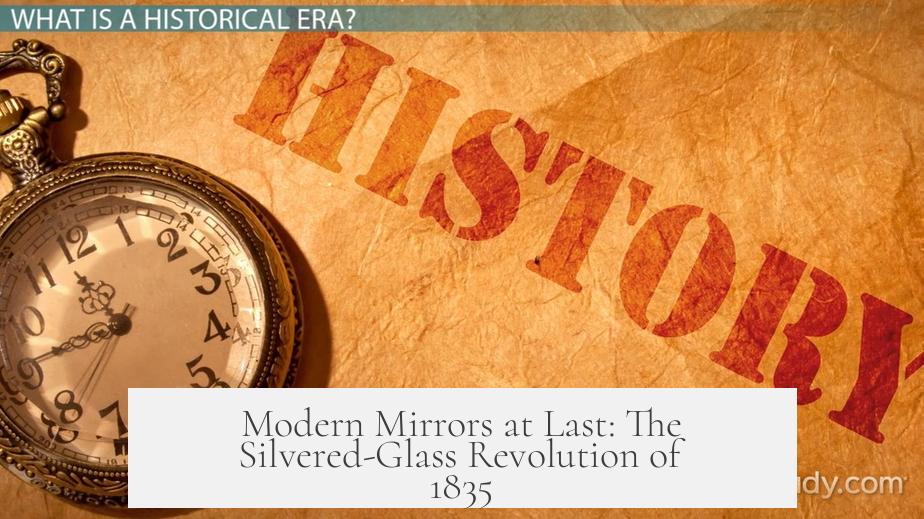
Hold that thought while we jump over a millennium to 1835. A German chemist named Justus von Liebig invents the silvered-glass mirror by depositing a thin layer of silver onto glass. This innovation marks a turning point—mirrors became sharper, lighter, and more reflective.
But wasn’t this already a thing? Nope. Before Liebig’s method, mirrors were hand-crafted and expensive. His technique paved the way for mass production, making mirrors affordable and accessible.
Industrial Revolution: Mirrors for the Masses
So, when did mirrors become readily available? The answer comes in the 19th century, during the Industrial Revolution. Factories adopted Liebig’s silvering process and other improvements. Suddenly, mirrors were no longer an elite luxury but household essentials.
Factories churned out frames in every style imaginable. Public houses, schools, and homes began to feature mirrors. It was a cultural shift: seeing one’s reflection was no longer ephemeral or mystical but a daily mundane act.
Reflections Through History: Cultural and Mystical Views
Before mirrors became household staples, people often regarded reflections with awe or suspicion. The gleaming surface sometimes seemed eerie or otherworldly. Consider ‘scrying,’ the practice of divining hidden knowledge by gazing into reflective surfaces like water, obsidian, or crystal balls. It was a mystical act, connecting the visible world with the unseen.
Even literature embraces this fascination. Lewis Carroll famously invited readers into a magical realm through a mirror in his novel Through the Looking Glass. Alice steps through the reflection into an alternate reality, highlighting the symbolic power mirrors held.
Bringing It Home: Practical Tips and Reflections for Today’s Mirror Users
Understanding this history enriches how you think about your everyday mirror. That humble bathroom glass is a centuries-in-the-making marvel! Want sharper reflections at home? Consider better lighting and cleaner glass. Or maybe gaze into a shallow pool outdoors and imagine what ancient humans felt, blessed with their gift of sight.
And next time you check your reflection, pause. You’re participating in a ritual thousands of years old—one that blends practicality, vanity, and a touch of mystery.
Summary Table: Key Mirror Milestones
| Era | Mirror Type | Availability | Notes |
|---|---|---|---|
| ~8000 years ago | Polished Obsidian | Rare, natural reflective surfaces | Earliest known mirror; natural volcanic glass polished smooth |
| ~2000 BCE | Polished Bronze | Very limited, expensive luxury | Reflective but tarnished over time; mostly for wealthy elites |
| 1st Century A.D. | Glass over Metal Leaf | Rare, luxury items | Early glass mirrors combining transparency and reflectivity |
| 1835 | Silvered-Glass Mirror | Beginning of mass availability | Invented by Justus von Liebig; basis for modern mirrors |
| Industrial Revolution (19th century) | Mass-produced Silvered-Glass Mirrors | Widely available and affordable | Enabled by industrial techniques; mirrors for households |
Now, when did mirrors become readily available? The answer is crystal clear—it’s the Industrial Revolution’s gift to everyday life.
But before this technological boom, reflection was a treasure found in water pools, glossy stones, and polished metals. People seeking a glimpse of themselves didn’t just check their appearances; they engaged with enchanting, sometimes mystical, surfaces. From the obsidian mirror to the silvered glass on your wall, mirrors carry stories of human curiosity, innovation, and a timeless fascination with our own image.
Isn’t it amazing that something so ordinary today was once a magical rarity? What would you think if you lived in ancient times, catching your reflection flickering over a pond instead of in a fancy frame? It’s a reminder of how far we’ve come—and how much a reflection can mean.
